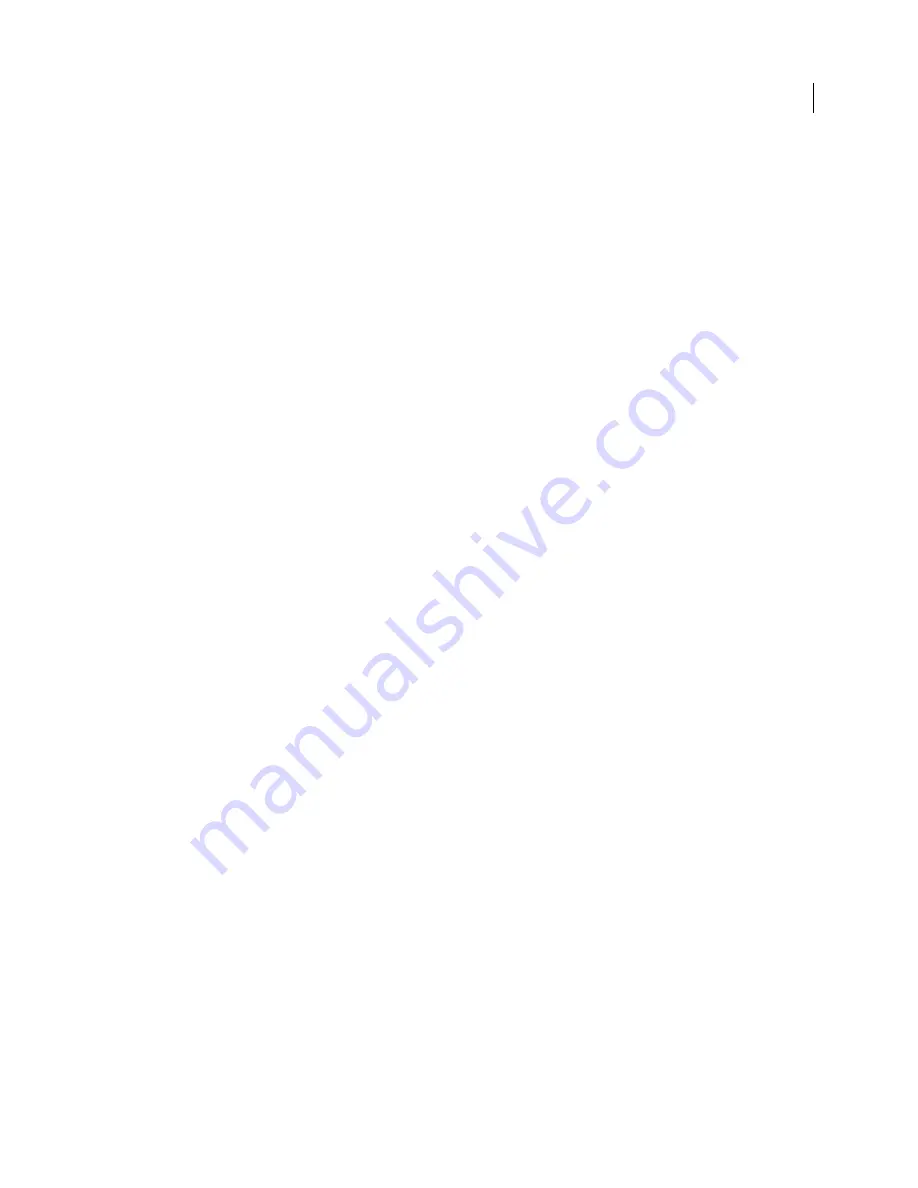
164
USING FLASH CS4 PROFESSIONAL
Symbols, instances, and library assets
Update or replace symbols
You can update or replace a movie clip, button, or graphic symbol in a document with any other symbol in a FLA file
accessible on your local network. The original name and properties of the symbol in the destination document are
preserved, but the contents of the symbol are replaced with the contents of the symbol you select. Any assets that the
selected symbol uses are also copied into the destination document.
1
With the document open, select a movie clip, button, or graphic symbol and select Properties from the Library
Panel menu.
2
If the Linkage and Source areas of the Symbol Properties dialog box are not showing, click Advanced.
3
To select a new FLA file, click Browse.
4
Navigate to a FLA file that contains the symbol to use to update or replace the selected symbol in the Library panel,
and click Open.
5
Navigate to a symbol, and click OK.
6
In the Symbol Properties dialog box, under Source, select Always Update Before Publishing and click OK.
Working with button symbols
Create a button
Buttons are actually four-frame interactive movie clips. When you select the button behavior for a symbol, Flash
creates a Timeline with four frames. The first three frames display the button’s three possible states; the fourth frame
defines the active area of the button. The Timeline doesn’t actually play; it reacts to pointer movement and actions by
jumping to the appropriate frame.
To make a button interactive, you place an instance of the button symbol on the Stage and assign actions to the
instance. You must assign the actions to the instance of the button in the document, not to frames in the button’s
Timeline.
Each frame in the Timeline of a button symbol has a specific function:
•
The first frame is the Up state, representing the button whenever the pointer is not over the button.
•
The second frame is the Over state, representing the button’s appearance when the pointer is over the button.
•
The third frame is the Down state, representing the button’s appearance as it is clicked.
•
The fourth frame is the Hit state, defining the area that responds to the mouse click. This area is invisible in the
SWF file.
You create a button using a movie clip symbol or a button component. Using each type of button has advantages.
Creating a button using a movie clip lets you add more frames to the button or add more complex animation.
However, movie clip buttons have a larger file size than button symbols. Using a button component allows you to bind
the button to other components and share and display data in an application. Button components also include prebuilt
features, such as accessibility support, and can be customized. Button components include the Button, RadioButton,
and CheckBox. For more information, see Button component in
ActionScript 2.0 Components Language Reference
at
http://www.adobe.com/go/learn_fl_cs4_as2clr_en
or
Use the Button component
in
Using ActionScript 3.0
Components
.
To create a button:
1
Select Edit > Deselect All to ensure that nothing is selected on the Stage.
Updated 5 March 2009






























